Configure my Hosting email accounts in Android Gmail
The Android operating system, present in most smartphones today, offers us from the Play Store application a variety of different mail managers, each with a slightly different configuration, however, the configuration parameters that we will use will always be the same (we will see them later).
To show a standard mail configuration with a mail manager present on all our Android phones without installing anything, we will configure our mail account in Gmail for Android.
The configuration shown in this manual requires the installation of a TLS security certificate for the mail of your Hosting
The data that we must take into account for the configuration of the mail account are the following:
-
Incoming mail server: mail.domain.com
-
IMAP port: 993
-
POP3 port: 995
-
Outgoing mail server: mail.domain.com
-
Mail account
-
Password
-
Protocol: SSL/TLS
To view the connection data of your email account from SWPanel you can check this manual.
In this case, the first account that is configured in the manager, is always the one of our Android phone, a Gmail account that we will have created or linked to enjoy all the services that the operating system makes available to us.
So, in this case, we are going to configure a second email account in the manager.
We open the mail application. From this screen we click on the icon of the drop-down menu:
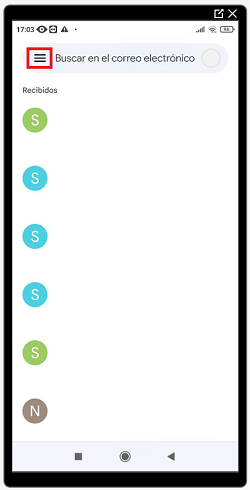
In the menu, select the "Settings" icon. Click on it:
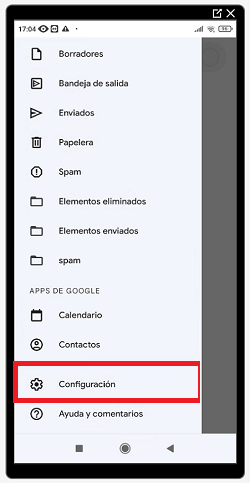
The settings menu will open. Click on "Add account":
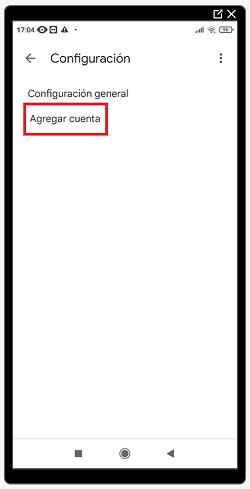
The e-mail configuration wizard will then start. In order to set up an account with your own domain, click on "Other":
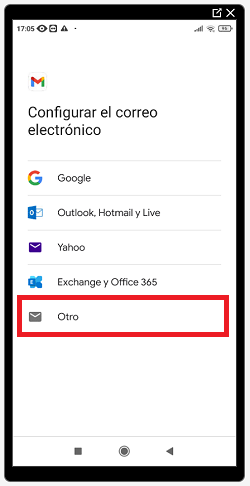
Enter the corresponding e-mail account and click on "Manual configuration":
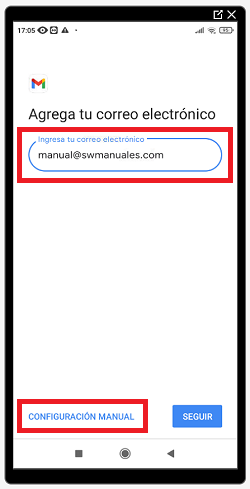
In this step we will be asked what type of account we want to configure. We will have to choose if we want to configure the account with the incoming mail protocol IMAP or POP3 (in the following manual, in the section "Mail protocols" we explain in detail the types of mail accounts that can be configured, what are the differences between them and what are the advantages and disadvantages between both).
For our example, we are going to configure the account in IMAP:
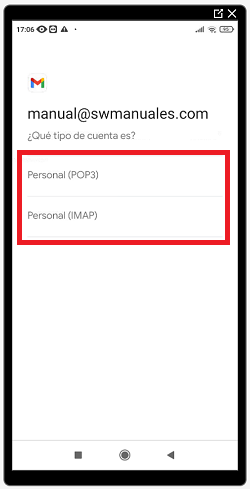
Now we must enter the password of our email account. Once entered, click on "Next":
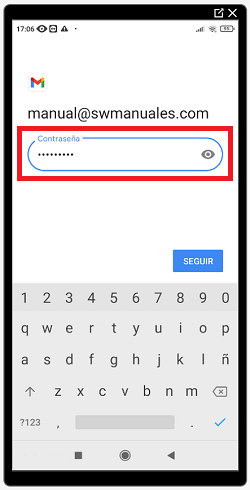
We remind you that from SWPanel you will not be able to see the information about the password of the email account because in compliance with ISO 27001, the LOPD and the RGPD, we do not store or provide personal passwords, and we do not have access to the passwords of email accounts, much less provide them.
In the next step, we will be asked to confirm the incoming server settings.
At this point it is very important to make sure that the incoming mail server name is correctly indicated. If not, we will have to modify it so that it corresponds to the specific configuration of our mail account.
Once checked and corrected, click on "Next":
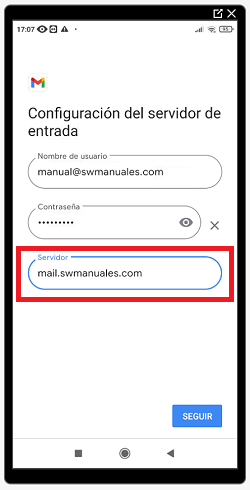
At this point, the manager will allow us to continue with the configuration by proceeding with the outgoing server settings. Make sure that the outgoing mail server settings are correct and click on "Next":
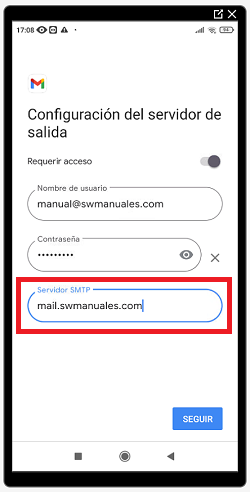
Next, you will be prompted to select the account preferences and options. In this step, you will need to choose which settings and preferences you need.
We will leave the default selections:
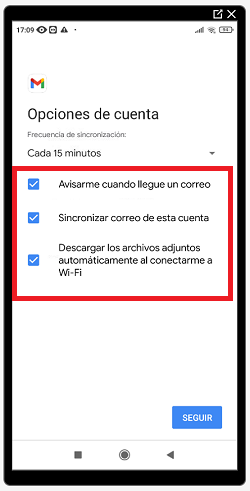
Finally, we will see a message warning us of "Account configured", you will be able to modify the User Name (optional, it does not affect the general configuration). Afterwards, click on "Next" to exit the wizard:
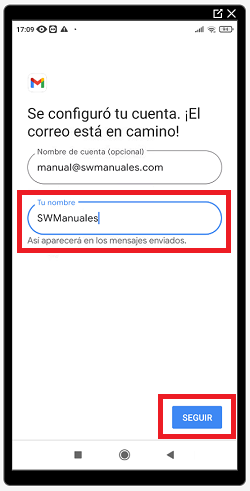
Once the configuration is finished, we will have the mail service with our own domain in the Google Mail mail manager.
See another manual of interest:










